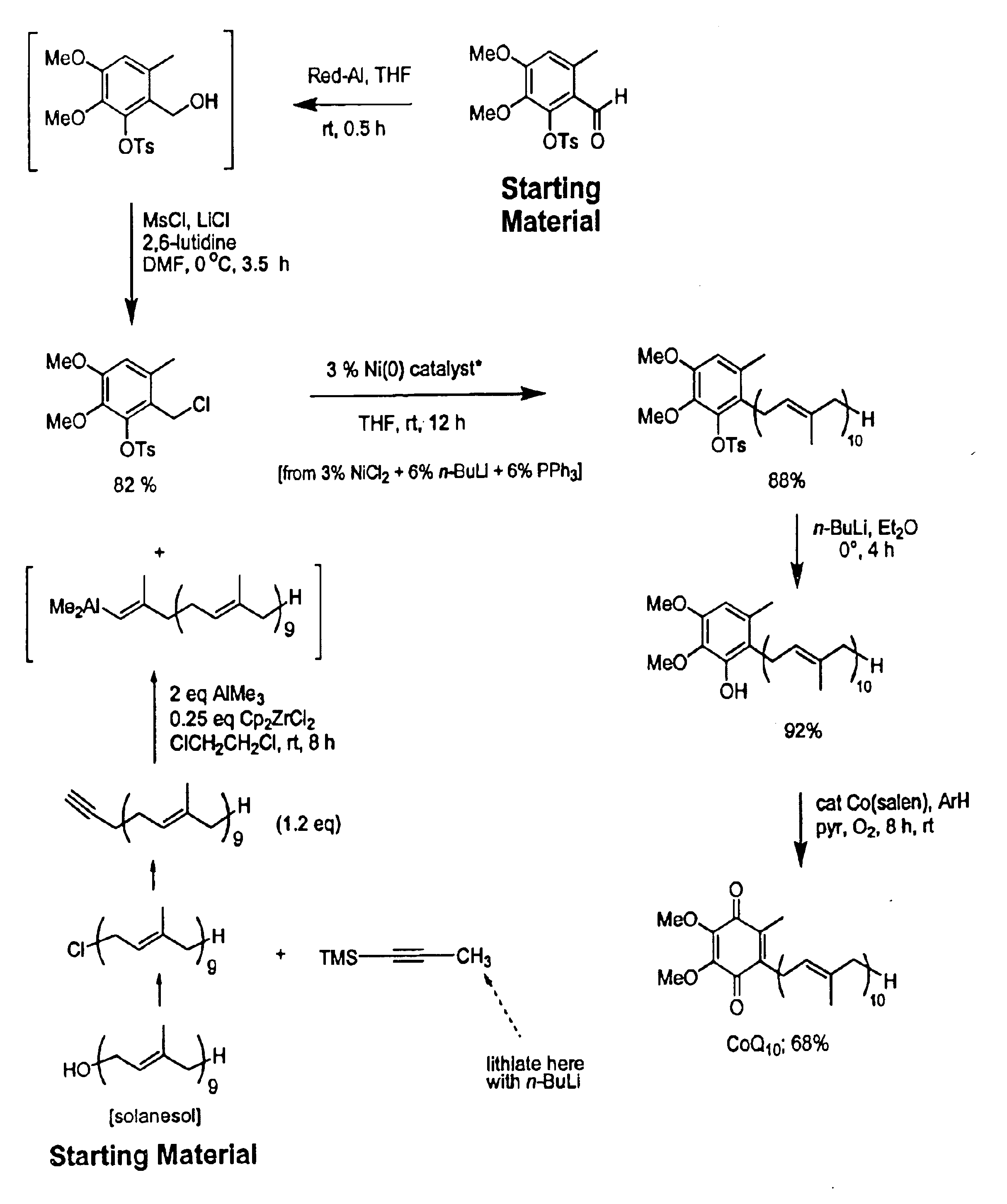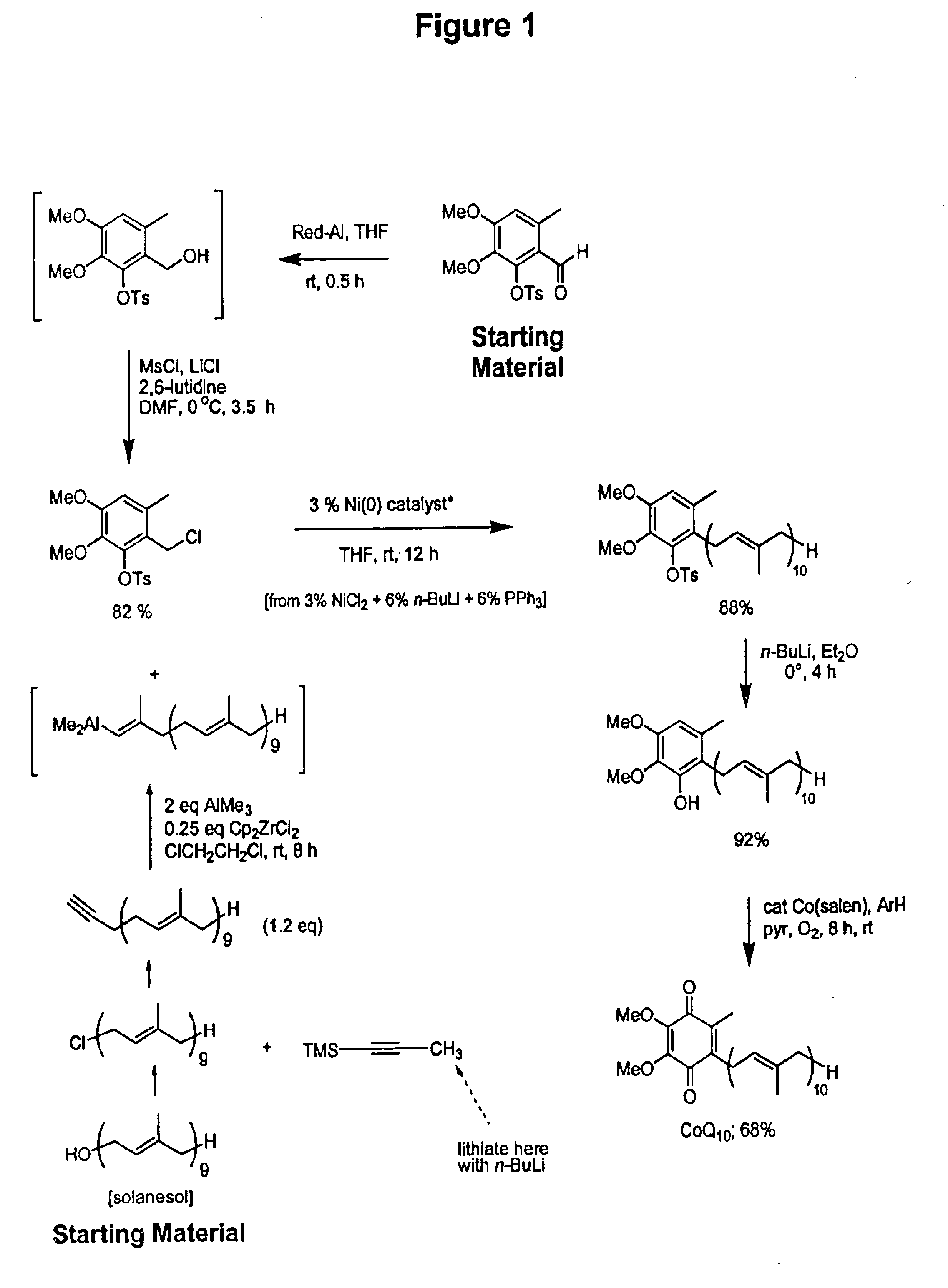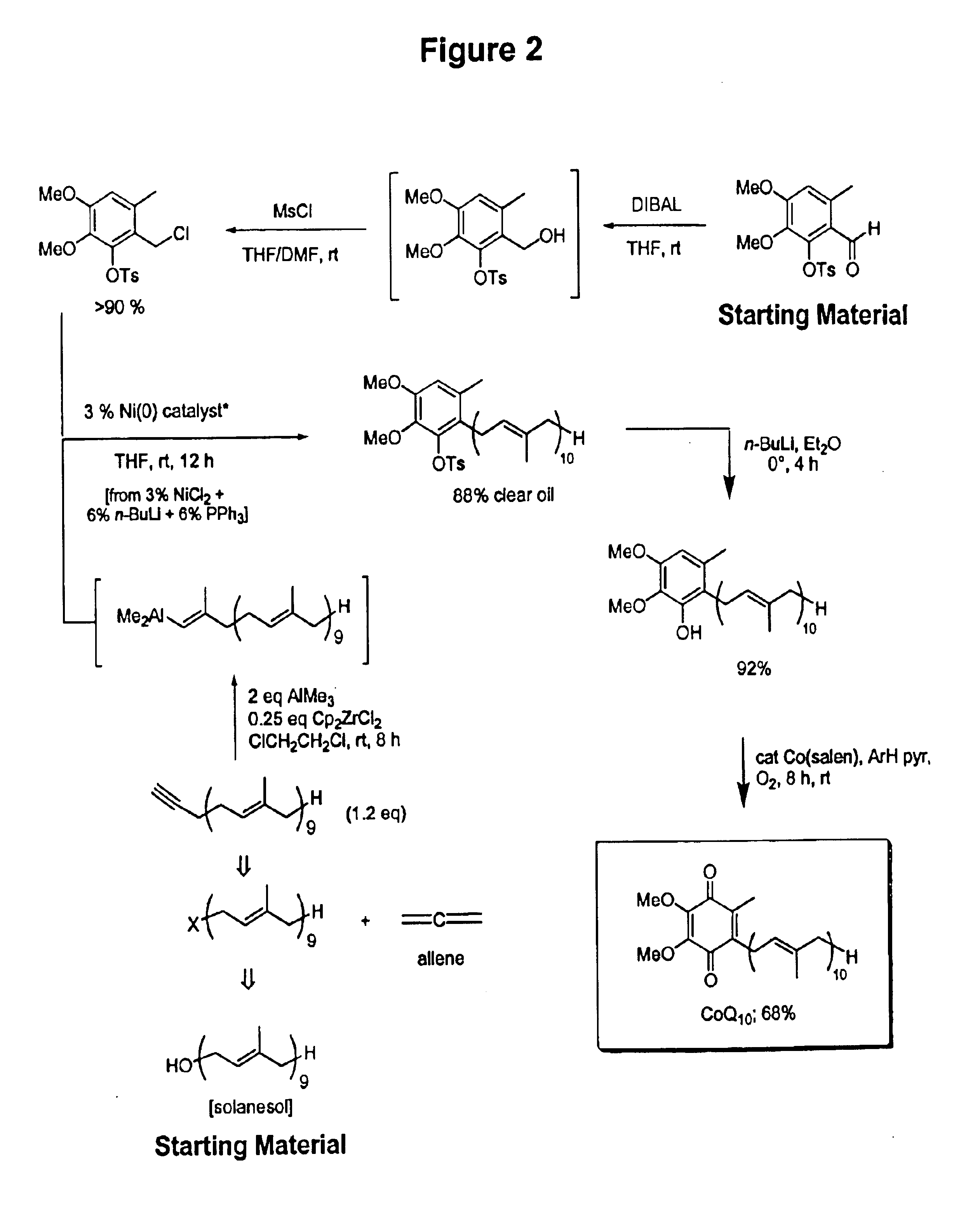Practical, cost-effective synthesis of CoQ10
a coq10, cost-effective technology, applied in the direction of organic compound/hydride/coordination complex catalyst, organic compound/compound/hydride/coordination complex catalyst, group 3/13 element organic compound, etc., can solve the problems of inefficiency, linear rather than convergent linearity, long process time, etc., to achieve convenient, efficient and inexpensive entry, the effect of efficient and inexpensive method
- Summary
- Abstract
- Description
- Claims
- Application Information
AI Technical Summary
Benefits of technology
Problems solved by technology
Method used
Image
Examples
example 1
1.1 Preparation of Reagents
PCl3 was refluxed for 3 h at 76° C. while slowly purging with dry argon to expel HCl, distilled at atmospheric pressure and stored in a sealed container under argon until needed. DMF, 2-propanol and benzene were used as supplied from Fisher chemicals. Solanesol, purified by column chromatography on SiO2 with 10% diethyl ether / petroleum ether, was dried azeotropically with toluene or benzene immediately prior to use. THF was distilled from Na / benzophenone ketyl prior to use. n-BuLi was obtained as a 2.5 M solution in hexanes from Aldrich and standardized by titration immediately prior to use. Ethanol was 200 proof, dehydrated, U.S.P. Punctilious grade. All other reagents were used as supplied by their respective vendors. Products were confirmed by 1H NMR, IR, LREIMS and HR-EI or HR-CI Mass Spectrometry.
1.2 Chlorination of Solanesol
DMF (5.0 mL) was cooled to 0° C. and PCl3 (370 μL, 3.30 mmol) was added slowly such that the reaction warmed but was never hot t...
example 2
2.1 Reagents
Ethanol was obtained from Rossville, Gold Shield U.S.P. grade 95% and stored in a sealed metal container. Sodium metal was stored under toluene and cut fresh just prior to addition to ethanol. TMS-Alkyne was purified by column chromatography and was a clear oil of >95% purity by 1H NMR.
2.1a Preparation of Sodium Ethoxide
Ethanol (10 mL, 95%) was placed in an open container with a slow stream of argon passing over it, sodium (53 mg, 2.31 mmol) was carefully added and allowed to dissolve. The theoretical concentration of NaOEt was 0.154 M.
2.2 Removal of TMS Group
TMS-Alkyne (256 mg, 0.353 mmol) in a 10 mL round bottom flask with a stir bar was charged with 2.8 mL of the sodium ethoxide solution (0.425 mmol, 0.15 M in NaOEt) and a reflux condenser attached. The biphasic solution was heated to 60-65° C. in a oil bath for 4 h. The reaction was poured onto 10 mL of deionized H2O and 10 mL of petroleum ether, the layers were separated, the aqueous layer extracted three times with...
example 3
3.1 Synthesis
3,4-Dimethoxy-6-methyl-2-toluenesulfonyloxybenzaldehyde (2.68 g, 7.65 mmol, Rf=0.28) in dry THF (8.0 mL) was stirred at 0° C. under argon in a 50 mL round bottom flask fitted with a double septa capped Claisen head. DIBAL-H (8.3 mL, Aldrich 21,498-1, 1.0 M in THF) was added dropwise via syringe over 5 min. The reaction was stirred for 1.5 h at which time TLC showed all but a trace of tosyloxy aldehyde had been consumed, giving a new spot corresponding to the tosyloxy benzyl alcohol (Rf=0.18). While maintaining the temperature at 0° C., DMF (5.0 mL, Aldrich 22,705-6) was added via syringe followed by dry LiCl (1.0 g, 22.9 mmol) in one portion through the Claisen head. Methanesulfonyl chloride (1.63 g, 1.10 mL, 14.2 mmol) was added dropwise via syringe followed by triethylamine (1.0 g, 1.35 mL, 9.7 mmol). After 60 min, the cooling bath was removed and the reaction was stirred at room temperature for 10 h after which time TLC showed all but a trace of the tosyloxy benzyl a...
PUM
| Property | Measurement | Unit |
|---|---|---|
| strength | aaaaa | aaaaa |
Abstract
Description
Claims
Application Information
 Login to View More
Login to View More - R&D
- Intellectual Property
- Life Sciences
- Materials
- Tech Scout
- Unparalleled Data Quality
- Higher Quality Content
- 60% Fewer Hallucinations
Browse by: Latest US Patents, China's latest patents, Technical Efficacy Thesaurus, Application Domain, Technology Topic, Popular Technical Reports.
© 2025 PatSnap. All rights reserved.Legal|Privacy policy|Modern Slavery Act Transparency Statement|Sitemap|About US| Contact US: help@patsnap.com



